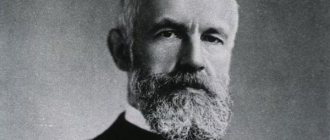Reminiscence is a mnemonic effect characterized by sudden recollection of perceived material without its repetition after a long time (from one day to 7, or even a longer period of time). Reminiscence is a mental phenomenon that often occurs during the perception of information material with internal logical connections of the content, making a strong emotional impression on the individual. The exact causes of sudden memories are not yet understood.
Reminiscence in literature
To understand the problem, one must distinguish reminiscence from literary borrowing. In the first case, everything happens unconsciously, with the aim of realizing specific artistic goals. Not everyone can detect such a phenomenon. Only prepared and insightful readers, listeners or viewers succeed in this.
Reminiscence is the author’s unconscious use of the experience of predecessors. There are many examples in world literature:
- "The Glass Bead Game" by German writer Hermann Hesse, 1943.
- Ulysses is a novel by Irish author James Joyce, which was published in its entirety in 1922.
- "The Long Walk to the Tea Party" by English writer Anthony Burgess.
- Works of the American poet Ezra Pound.
Causes
The presence of moments of reminiscence is often the norm, based on the peculiarities of memory functioning. The effect is most common in childhood, especially if the initially remembered material has a strong emotional overtones and internal logical connections. If an emotional reaction at the first moment may interfere with the reproduction of acquired knowledge, then after “processing” the material, logical connections are “activated.” This is what allows you to remember something in more detail and correctly after some time.
Students also encounter reminiscence when actively preparing for exams. And what comes to the fore is not understanding the material, but targeted memorization. When initially retelling a large amount of educational material studied at once, its retelling may be incomplete, in particular under the influence of fatigue and boredom. After a day or more, remembering (reminiscence) is easier, and information is perceived to a greater extent.
Psychological reasons
From a psychological point of view, the reminiscence effect manifests itself due to the normalization of the state when fatigue passes. The material “fits” in your head, which makes voicing it later easier.
Another option for explaining the feature is the absence of “layering” of additional details on previously obtained data. In a situation where a person tries to remember many facts at once, they “overlap” each other. Because of this, confusion arises, conditioned forgetting. After a certain break, reminiscence can manifest itself, since there is no additional load on the memory.
Psychologists also believe that even when memorization stops, the involuntary process of repetition continues in the mind. This allows you to thoroughly remember any data. And then leads to reminiscence in certain circumstances.
Russian literature
Reminiscence in the literature of Russian classics is most often found in poetry. The authors unconsciously borrowed other people's images or rhythmic-syntactic moves. You can find similar examples in the works of A. Blok, A. Pushkin, O. Mandelstam and many others.
Many Russian poets consciously used the technique of reminiscence to create complex associations in the reader that enriched the perception of the work.
Literary reminiscences in poetry:
- In A. Pushkin’s poem “Eugene Onegin,” when describing Lensky’s grave, the author created an association with the then popular elegy of C. Milvois.
- In his work “Scythians,” A. Blok uses a phrase from “The Tale of Igor’s Campaign.”
- In their poems, A. Blok and O. Mandelstam deliberately hint at the work of I. Annensky.
Russia
At the same time, the word entered the Russian language as an everyday Gallicism and allusion. In a letter dated February 1, 1840 to the Russian historian T. N. Granovsky, the philosopher and poet N. V. Stankevich called the platonic relationship of the addressee with N. V. “reminiscence.” In the second half of the 19th century, the word became a traditional musical term. In a letter to the Russian composer M. P. Mussorgsky, pianist and conductor M. A. Balakirev dated June 10, 1863, gave a description of the past opera through musical “reminiscences.”
In the modern period in Russia, the methodological problems of literary reminiscence were dealt with by M. M. Bakhtin, D. S. Likhachev, Yu. M. Lotman, A. Gollovacheva (), A. Arkhangelsky () and P. Bukharkin (). A number of fruitful solutions were found by Lo ().
In the early 1990s, reminiscence in drama (in the works of N. Sadur and others) was carried out by St. Petersburg mass media arts theorist T. A. Marchenko and her students.
Reminiscence effect
Reminiscence is an excellent technique with which a work can be made even more rich and dynamic. Its effect is related to human memory and is based on associations and memories.
The technique is performed by referring to famous world works, historical facts, biographies of famous people, and various works of art. This could be a mention of a specific character, a scene from another work. In rare cases, direct quotation is used. The effect is achieved if the reader catches the similarity and draws the analogy that the author intended.
Many authors have learned to use reminiscence in their texts. In this case, even if the reader did not catch the analogy, he will be able to understand it with the help of the author. However, it happens when a memory slips into the plot intuitively. Then the effect will not be so obvious, so only very attentive readers will be able to unravel it. This may also be a discovery for the writer himself, who did not intend to draw an obvious analogy.
Functions and role
Understanding memory as a cultural and historical phenomenon gave rise to the establishment of new connections between historians and psychologists. In order for a cultured person to be able to reveal his existence in the contemporary world without losing touch with the previous one, it is necessary that he can understand the meaning of already existing artifacts and be able to find echoes of his culture in them.
Reminiscence in psychology is the process of semiotic reproduction of memory material. They are carried out at the border, where a meeting takes place - the interaction of the core of social memory with its marginal outskirts, where the translation of value-symbolic codes from one language to another takes place:
| Social memory analysis | Reminiscence in an ontognoseological sense is necessary, but not sufficient for its complete study. Social memory is not only a reality that has special ways of being, it is also a certain level of relationships that are constantly formed within the framework of social memory, connecting the past, present and future. |
| Epistemological trajectories | The role of reminiscence has also been proven in epistemological discourse. It also assumes some correlation of the ontognoseological approach. In modern cultural knowledge, processes are currently taking place similar to those that led in the middle of the 20th century to the institutionalization of a new scientific direction - science studies. |
| Position correlation | Reminiscence allows us to characterize all epistemological positions. Its role is to institutionalize a new scientific direction. |
Thus, despite the fact that reminiscence indicates a psychiatric and psychophysiological disorder, this process is important for studying the pathogenesis of personality in the context of the formation of memory and memories.
Reminiscence in cinema
The phenomenon of memory is inherent in all types of art. The most popular today is cinema, which is also full of different methods of influencing the viewer. Reminiscence is no exception.
A striking example is Leni Riefenstahl’s painting “Triumph of the Will.” At the end of the film, an analogy is drawn with the painting of the famous impressionist Claude Monet “Rue Saint Denis on the Day of the National Day.” In the film, as on the canvas, only waving banners are visible without the people holding them.
The scene between the main character and the CIA officer from the 1975 political drama “Three Days of the Condor” can be seen as a reminiscence of the monologue of the Grand Inquisitor (a parable from F. Dostoevsky’s novel “The Brothers Karamazov”).
Symptoms
Since reminiscence is either the norm or one of the symptoms of the disease, there is no need to talk about the various variants of manifestation of the phenomenon. The psychological features of reminiscence are the basis on which the psychiatric component is based.
In the form of a norm
The conditional symptom of reminiscence is clearly reflected in the direct explanation of the essence of the phenomenon. A person, after a certain amount of time, is able to clearly talk about something that seemed to be forgotten.
In the pathological variant
Pathological reminiscence is characterized by the effect of obsession with images and thoughts that cannot be controlled. They arise spontaneously, despite the fact that, as it seemed, the negative experience of the past was forgotten.
Depending on the strength and vividness of the memories, the effect can provoke an emotional reaction (increased anxiety and restlessness, fear, panic reaction, etc.), and affect physiology (trembling, pallor, uncontrollable behavior, etc.).
Since manifestation is an additional symptom to any negative condition, along with reminiscence, other manifestations characteristic of a particular disease may appear.
Correction
Not being a deviation, this pathology does not require intervention from a psychologist or psychiatrist. Of greater concern may be the complete absence of this manifestation of the psyche, which in old age may indicate developing dementia, or in other situations be a signal of pathological states of memory and brain.
If remembering is considered as a form of negative obsession, then correction methods can be either medicinal or psychotherapeutic.
Causes
The presence of moments of reminiscence is often the norm, based on the peculiarities of memory functioning. The effect is most common in childhood, especially if the initially remembered material has a strong emotional overtones and internal logical connections. If an emotional reaction at the first moment may interfere with the reproduction of acquired knowledge, then after “processing” the material, logical connections are “activated.” This is what allows you to remember something in more detail and correctly after some time.
Students also encounter reminiscence when actively preparing for exams. And what comes to the fore is not understanding the material, but targeted memorization. When initially retelling a large amount of educational material studied at once, its retelling may be incomplete, in particular under the influence of fatigue and boredom. After a day or more, remembering (reminiscence) is easier, and information is perceived to a greater extent.
Psychological reasons
From a psychological point of view, the reminiscence effect manifests itself due to the normalization of the state when fatigue passes. The material “fits” in your head, which makes voicing it later easier. Loading…
Another option for explaining the feature is the absence of “layering” of additional details on previously obtained data. In a situation where a person tries to remember many facts at once, they “overlap” each other. Because of this, confusion arises, conditioned forgetting. After a certain break, reminiscence can manifest itself, since there is no additional load on the memory.
Psychologists also believe that even when memorization stops, the involuntary process of repetition continues in the mind. This allows you to thoroughly remember any data. And then leads to reminiscence in certain circumstances.
Psychological theories and schools
Reminiscence in psychology, according to the concept of M. Wartovsky, these artifacts act as the objectification of human needs and intentions, already saturated with cognitive and affective content.
- The first level of artifacts consists of the so-called primary artifacts.
- Secondary artifacts include, in addition to primary artifacts, ways of using them.
- The third level is a class of artifacts that, while remaining intermediaries between a person and the cultural world around him, at the same time go beyond their own limits, constituting, as it were, their own, autonomous world.
There is a unified theory that shows the specifics of the analysis of social reminiscence. It is based on the works of Yu. N. Davydov, V. A. Kolevatov, A. I. Rakitov, M. A. Rozov, L. P. Shvets, in which social memory is considered from the perspective of information theory.
O. Mandelstam. "I'll tell you from the last one..."
Let's try to read together the poems of a very difficult poet - O.E. Mandelstam.
Ma voix aigre et fausse…
P. Verlaine[1]
I will tell you with the last directness: It’s all just nonsense - sherry-brandy - my angel.
Where Beauty shone for the Hellenes, Shame gaped at me from the black holes. /10/
The Greeks bonded Elena over the waves, and for me - with salty foam over my lips.
Emptiness will smear my lips, Poverty will show me a stern fig.
Oh, whether it’s like that, whether it’s blowing, whether it’s blowing - It doesn’t matter; Angel Mary, drink cocktails, blow wine.
I will tell you with the last directness: It’s all just nonsense - sherry-brandy - my angel.
March 2, 1931
“What nonsense!” - you might say. Moreover, it’s kind of frivolous: “sherry brandy” (obviously a drink), “blow wine” and the rhythm is kind of rollicking. The poet is playing the fool, and that’s all! And if you read other poems created by Mandelstam at the same time, you will be even more surprised. For example, the poems “Leningrad”, “You and I will sit in the kitchen...” or this:
Help me, Lord, to get through this night, I’m afraid for my life, for your slave... Living in St. Petersburg is like sleeping in a coffin.
How could it happen that the poet, at the same time as tragic poems, writes lines that seemed so frivolous to us?..
Let's try to find the answer to this question. In the poem “I will tell you with final directness...” our attention was attracted by the words “the Greeks bonded Helen along the waves.” “Sbondili” - in modern non-literary, colloquial language means “stolen.” But why does the poet use such a word in relation to the beautiful Helen, whose fate, as the legends of the ancient Greeks tell, became the cause of the Trojan War? It is not even in one of the best dictionaries of the modern Russian language - the dictionary of S.I. Ozhegova. /11/ You can only find it, perhaps, in a dictionary of synonyms. The task of the compiler of such a dictionary is to bring as many synonyms as possible for this or that word, and they have not only subtle semantic differences, but, as a rule, also different stylistic colors and belong to different stylistic layers of the language.
Another feature of this poetic text will help answer the questions that arise. It is worth thinking about which Mary the poet is addressing? Isn’t this the same Mary who sings “sadly and drawn-out” in one of Pushkin’s “little tragedies” - “A Feast in the Time of Plague”?
Read the work of A.S. Pushkin, Mary’s sad and tender song does not prevent her from being a participant in the feast and, to use the expression of O.E. Mandelstam, “blowing” wine. A feast during a plague cannot but seem blasphemous. At the same time, the tragedy of what is happening is obvious: all those feasting are themselves on the verge of death. This is evidenced by the very first monologue-toast of one of the participants in the feast, dedicated to Jackson, who “two days ago” was still among the feasters, but has now gone “to the cold underground dwellings.”
In O.E. Mandelstam’s poem, the lyrical hero also finds himself among the feasting: the words “blow wine” are colloquial to such an extent that they are almost intimate; with such words one can, perhaps, only address a drinking companion. This feast is both similar to Pushkin’s and different from it. The plague is also rampant in Mandelstam’s world. Only this is a different plague, the “plague” of Stalin’s time. Having lost the meaning of a real infection, it did not become any less terrible. The frivolity of the poem turned out to be imaginary. It does not stand out from the number of other tragic poems by Mandelstam of that time. Like Pushkin, we have before us a song (note the regularity of the rhythm, the refrain). This is also a song on the eve of non-existence, next to the horror of non-existence. Because
Where Beauty shone for the Hellenes, Shame gaped at me from the black holes.
That is why to the Greeks - Elena, and to the poet - “foam” on the lips; “emptiness” and “fig”, shown by poverty. Words that seem completely unpoetic, words of colloquial and even colloquial style turned out to be appropriate and even necessary, and for you and me they became the stylistic key to understanding the poem. They expressed the state of the lyrical hero, who feels both himself and the world are standing on the brink of death. /12/ A person who speaks “with utmost directness” does not choose his words—and O. Mandelstam’s lyrical hero does not choose them either. They are selected by a poet who shows the condition of such a person.
Mandelstam's poem combines words belonging to different styles of speech. The “memory” of the song of Pushkin’s Mary also entered here in the most organic way. This is not a mechanical connection. This is the case when a violation of unity creates a new unity, an individual poetic style. Perhaps, it was precisely this kind of unity that A.S. wrote about. Pushkin: “True taste does not consist in the unconscious rejection of such and such a word, such and such a turn of phrase, but in a sense of proportionality and conformity”[2]. Individual literary style is not only a feature of the verbal structure of a work. This is a combination of many aspects of the artistic world of a work, many techniques used by the author to create this artistic world. Thus, the style of the poem “I will tell you from the last one...” is created by rhythm, genre features, and composition, developing a parallel between the plots of the ancient myth of the beautiful Helen, Pushkin’s “little tragedy” and the original plot of Mandelstam’s poem. As we have seen, a reminiscence from “A Feast in the Time of Plague” by A.S. also plays an important role here. Pushkin.
Plato
The authorship of the ancient Greek philosophical term should be attributed to Plato. The concept was used in Plato's doctrine of the nature of the human soul and the doctrine of ideas. Plato believed that intuition serves as a tool for the soul to collect information about another world. This term is found in three of Plato's major works. In the Meno, Socrates talks about the universal relatedness of objects to each other, thanks to which one can literally remember everything and find everything. The Platonic concept, put into the mouth of Socrates, is that the mechanism of recollection ( anamnes
,
anamnesis
, ancient Greek ἀνάμνησις) opens access to judgments about causes. The Phaedo repeats the dogma that knowledge is actually recollection. In the Phaedrus, Plato postulates reminiscence (remembering) as initiation into the sacraments and an approach to spiritual perfection.
Forms of manifestations
An analysis of modern philosophical literature devoted to the problems of reminiscences has made it possible to identify the specifics of the emergence of reminiscences and to reveal their functional and semantic characteristics.
In the process of the emergence of reminiscences, both 2 homogeneous (to a certain extent) and 2 heterogeneous cultural phenomena can be involved. One of them is the essence that is designated in this process, and therefore acts as the primary subject form of manifestation.
The second is an auxiliary entity (secondary, subsidiary subject), as a form of manifestation.
It is correlated with the designation of a ready-made name:
- The heterogeneity of these entities and the associated associative complexes make it possible to go beyond the boundaries of both the old and the new circle of ideas, synthesizing a fundamentally new reality.
- The process of reminiscentization itself can be considered as a problematic cognitive-nominative situation with many variable factors, among which there may be facts of a person’s personal intellectual, spiritual cultural life, and the existence of the society in which a person lives.
- The reminiscent process is extremely rich and diverse in its forms of manifestation. It covers the entire intention of the subject of reminiscence, including the moment of choosing one or another way of expressing the meaning of reminiscence.
The idea of reminiscence is an urgent need to name a conscious (often quite vaguely) but not yet thought-out concept (thing, object) by using an already existing text, sound, paint, genre of art.










